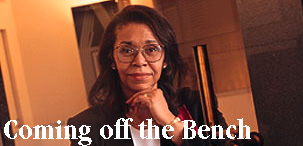

No wonder it was so rare for Malcom to encounter an African American science teacher when she was a student.
"It was downright dismal," explains Willie Pearson Jr., a Wake Forest University sociology professor and an expert on science education for women and minorities. "I grew up in a part of Texas with historically black schools where we had black professors and college presidents. But when I left the area, I couldn't find any black professors or blacks in science industry."
But Malcom wasn't thinking about that when she was a little girl growing up in Birmingham. The daughter of a meat packer and school teacher, she loved biology and wanted to be a doctor.
Though Seattle was a relief because racism wasn't as prevalent as in the South, "I had lived in an all-black world in Birmingham," she says. "I had very little interaction with people who didn't look like me."
Malcom--one of only three African American out of 400 women in her UW dorm at the time--lived with white roommates for her four years here. Her first roommate was from North Dakota and had little experience with blacks. "We focused on things we had in common: getting through chemistry, music, going to games." They also talked about their wildly different times growing up.
It was an education for both of them. "This is the reason we must recognize and defend the educational value of diverse learning communities," she says.
She also had difficult times. One friend in the dorm had a boyfriend who made little effort to hide his dislike of blacks. And it was hard for her connect with black students who commuted to school. "I was a Southerner, with a lot less `polish,' and likely a lot more baggage than Seattle-born students," she says. "And as a science major, I was already a world apart." She spent so much time in labs, she didn't have time to get involved with African American commuter students. "I often felt isolated from that side," she recalls.
In the UW classroom, she learned another hard truth: "I found out how deficient segregated schooling left me," she recalls. "I was the top student in my class in high school, but at Washington I had to run like crazy in my studies to keep up. I just had to work harder than anyone else around me. I knew it was going to be unforgiving. I knew a lot of sacrifices were being made so I could be in college."
When she wasn't in class or a lab, she was usually holed up in a favorite corner of Suzzallo Library, studying. About her only regular social activity at the UW was serving a year as a dorm representative on the ASUW Board of Control.
John Coombs, associate vice president for medical affairs at the UW, was a fellow zoology major. "She was a very good and hard-working person, while at the same time a very warm and interactive individual," he recalls. "She always had concern for her fellow classmates, and was quite confident about her own abilities, especially as time went by."
But the ones who had confidence in her abilities were her professors. Between her junior and senior years, Zoology Professor Alan Kohn, Malcom's adviser, was so impressed with Malcom that he suggested she consider a science career in academe--a field with few African Americans. "Had he not said that, I don't think I would ever have thought of myself in that role ever," she says. "He saw my potential."
She continued into uncharted waters. After graduating from the UW, she was off to UCLA, where she earned a master's degree in animal behavior in 1968 and got involved with civil rights marches, occupations and strikes. After that, she thought she found her niche, teaching high school in Los Angeles. But the 1971 earthquake and the murder of a cousin in Southern California devastated her. So she moved back to Seattle for a year, where she served as the director of Hansee Hall at the UW.
She enjoyed being back. But she realized, "I was leaving my dream unfulfilled," she says. "I needed to get back into education." Off she went to Penn State, where she received a Ph.D. in ecology. Following graduation, she got back into teaching, accepting a faculty position at the University of North Carolina-Wilmington.
The Double Bind: Minority Women in Science
The UW's Alumna Summa Laude Dignata Award
Send a letter to the editor at columns@u.washington.edu.